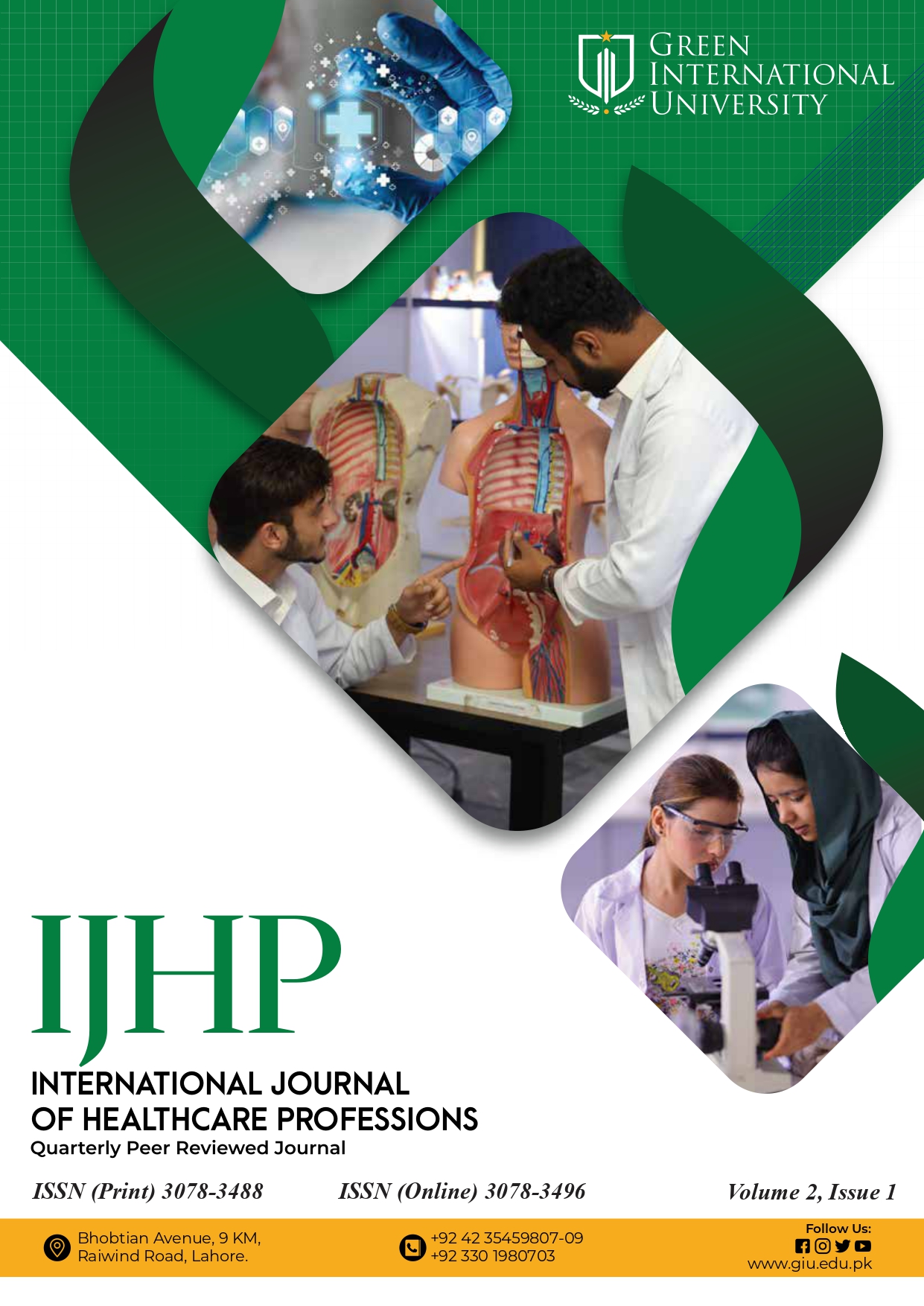Prevalence of Lumbago in Construction Workers of Lahore: A cross-sectional Study
DOI:
https://doi.org/10.71395/ijhp.1.4.2024.53-58Abstract
Background and Objectives: Building industry is the most important and main industry of the world in field of construction. Jobs that are either actually hard or need repetitive lifting are a high threat for back ache. The
construction workers are at risk of such musculoskeletal injuries. The main objective of the study is to find out the prevalence of lumbago in construction workers of Lahore.
METHODOLOGY: Cross- sectional study was conducted to determine the frequency of lumbago in construction workers. The total participants were 100 of age between 20 to 40 years. Data was collected from the construction sites in Lahore. Structured questionnaire was used in data collection. Simple non probability convenient sampling technique was used to collect the data.
RESULTS: There were total 100 participants, out of them 72% (n=72) participants have lumbar discomfort and 28% (n=28) participants were without lumbar discomfort.45% (n=45) were those who had no radiation of pain on either side and 55% (n=55) are those who had radiating back pain. Pain and incorrect posture are negatively correlated (r value -0.92).
CONCLUSION: Lumbago is highly prevalent in construction workers. Working position and long working hours are strong contributing factors in lumbago. Poor posture and pain are negatively correlated (p value <0.05 and r value is -0.92). The overall prevalence of lumbago among the construction workers in studied population is about 72%.
References
Hartvigsen J, Hancock MJ, Kongsted A, Louw Q, Ferreira ML, Genevay S, et al. What low back pain is and why we need to pay attention. The Lancet. 2018;391(10137):2356-67.
Will JS, Bury DC, Miller JA. Mechanical low back pain. American family physician. 2018;98(7):421-8.
Urits I, Burshtein A, Sharma M, Testa L, Gold PA, Orhurhu V, et al. Low back pain, a comprehensive review: pathophysiology, diagnosis, and treatment. Current pain and headache reports. 2019;23:1-10.
Nieminen LK, Pyysalo LM, Kankaanpää MJ. Prognostic factors for pain chronicity in low back pain: a systematic review. Pain reports.
;6(1).
Almeida DC, Kraychete DC. Low back pain-a diagnostic approach. Revista Dor.
;18:173-
Harrianto R, Samara D, Tjhin P, Wartono M. Manual handling as risk factor of low back pain among workers. Universa Medicina. 2016;28(3):170-8.
Petit A, Roquelaure Y. Low back pain, intervertebral disc and occupational diseases. International Journal of Occupational Safety and Ergonomics. 2015;21(1):15-9.
da Silva T, Mills K, Brown BT, Pocovi N, de Campos T, Maher C, et al. Recurrence of low back pain is common: a prospective inception
cohort study. Journal of physiotherapy. 2019;65(3):159-65.
De Souza IMB, Sakaguchi TF, Yuan SLK, Matsutani LA, do Espírito-Santo AdS, Pereira CAdB, et al. Prevalence of low back pain in the elderly population: a systematic review. Clinics. 2019;74.
Buchbinder R, Underwood M, Hartvigsen J, Maher CG. The Lancet Series call to action to reduce low value care for low back pain: an update. Pain. 2020;161(1):S57.
Wu A, March L, Zheng X, Huang J, Wang X, Zhao J, et al. Global low back pain prevalence and years lived with disability from 1990 to 2017: estimates from the Global Burden of Disease Study 2017. Annals of translational medicine.
;8(6).
Valero E, Sivanathan A, Bosché F, Abdel-Wahab M. Musculoskeletal disorders in construction: A review and a novel system for activity tracking with body area network. Applied Ergonomics. 2016;54:120-30.
Deros BM, Daruis DD, Khamis NK, Mohamad D, Daud SFM, Amdan SM, et al. Prevalence of Work Related Musculoskeletal Disorders Symptoms among Construction Workers: a Case Study in Malay¬ sia. Iranian Journal of
Public Health. 2015;43(3):53-7.
Perich D, Burnett A, O’Sullivan P, Perkin C. Low back pain in adolescent female rowers: a multi-dimensional intervention study. Knee Surgery, Sports Traumatology, Arthroscopy. 2011;19(1):20-9.
Patel AT, Ogle AA. Diagnosis and management of acute low back pain. American family physician. 2000;61(6):1779-86, 89-90.
Downloads
Published
Issue
Section
License
Copyright (c) 2025 International Journal of Healthcare Professions

This work is licensed under a Creative Commons Attribution 4.0 International License.
This is an open-access journal and all the published articles / items are distributed under the terms of the Creative Commons Attribution License, which permits unrestricted use, distribution, and reproduction in any medium, provided the original author and source are credited. For comments ijhp@giu.edu.pk






